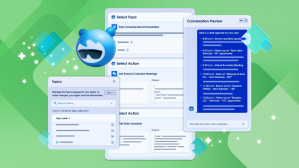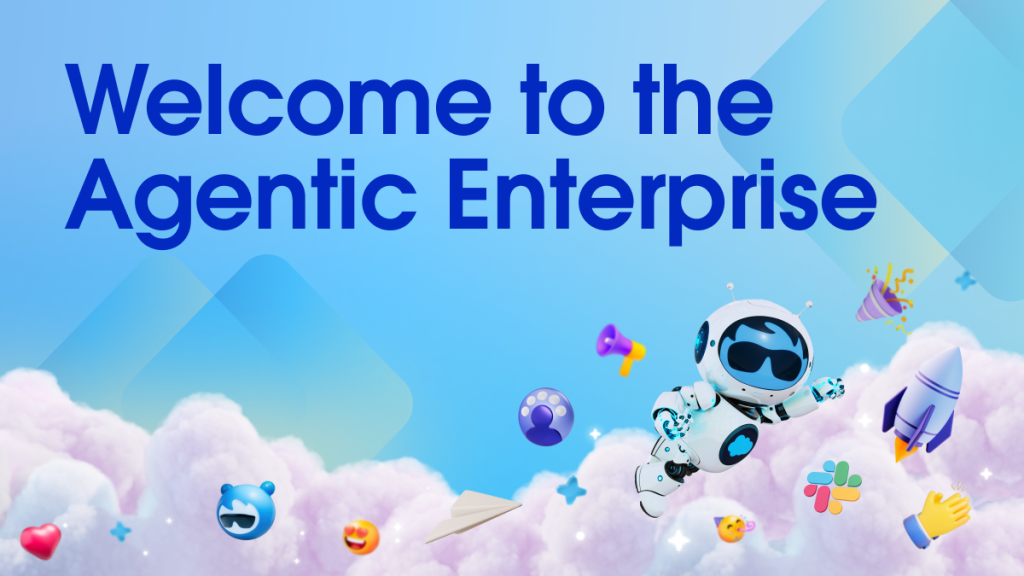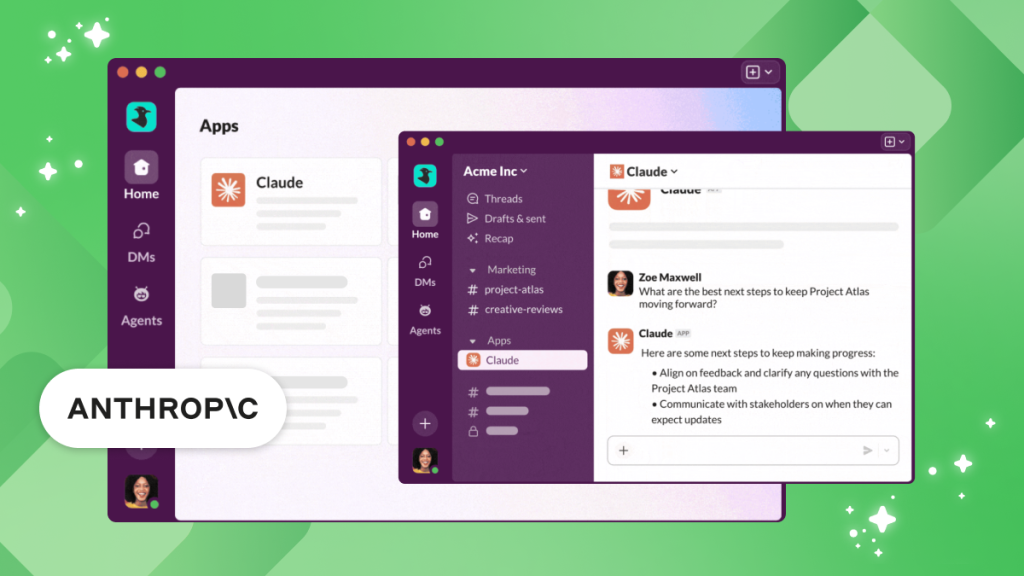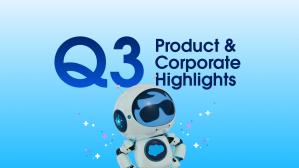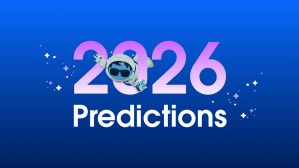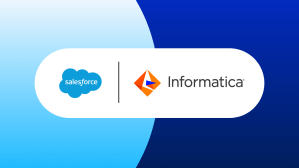Key Takeaways
- The key to successful enterprise AI agent adoption is hybrid reasoning — striking a deliberate balance between strict, deterministic rules for safety and compliance and nondeterministic autonomy for creative problem-solving.
- Achieving this balance requires a design-first process where autonomy is treated not as a binary choice but as a capacity that is scaled safely. Companies must start small, use guardrails, and only increase an agent’s freedom as it proves reliable, ensuring trustable autonomy.
The promise of a faster, smarter enterprise is becoming reality, as organizations embrace AI agents that not only follow instructions but also reason, act, and even learn autonomously. This shift isn’t incremental — it’s transformative, changing how decisions are made and how work gets done.
While the rapid growth of AI capabilities has been undeniably impressive, building AI agents for Agentic Enterprises requires careful thought. Unchecked autonomy can be risky. One rogue response from an agent can draw regulatory scrutiny or cause reputational harm to the brand. But overcontrol can strangle innovation, reducing agents to glorified chatbots.
Balancing autonomy with accountability — where independence fuels discovery but guardrails ensure accountability — has become one of the central challenges when deploying AI agents at scale.
AI designers refer to “determinism” as the strict rules that ensure consistent customer experiences, predictable business results, and legal and regulatory compliance. “Nondeterminism,” on the other hand, refers to the constructive autonomy that enables creative problem-solving and the emergence of new ideas and insights.
For example, a logistics agent may find that rerouting shipments through a less-obvious distribution hub can shorten delivery times. Or a product development agent could surface an unexpected feature idea from customer feedback.
Companies on the path to becoming agentic enterprises have learned that an effective AI deployment requires striking that balance — deliberately calibrating agent autonomy to provide true value while maintaining the guardrails that protect what matters most.
Companies on the path to becoming agentic enterprises have learned that an effective AI deployment requires striking that balance — deliberately calibrating agent autonomy to provide true value while maintaining the guardrails that protect what matters most. It takes work to align business goals with technical design and risk tolerance. But the organizations that crack this code are building competitive advantages their rivals will spend years trying to match.
Balancing safety and flexibility
At Salesforce, the strict limits on AI agents are called “baseline non-configurable capabilities,’’ according to Rob Katz, who co-leads the Responsible AI & Tech team inside the company’s Office of Ethical and Humane Use. These are hardwired protections — like blocking offensive language or rejecting sexually explicit prompts — that apply no matter how a customer configures the system.
Such protections aren’t optional, Katz stresses. Customers can’t edit them and can’t even see them. Salesforce bakes in other non-configurable safety layers as well, from content filters to hidden safety prompts. Additionally, all interaction data is retained for a maximum of 30 days before permanent deletion and is never used for model training or commercial purposes.
And before agents ever go live, customers can stress-test them in a so-called sandbox, using synthetic data, and conduct adversarial “red team” exercises designed to probe for weak spots.
Beyond that ethical AI baseline, however, companies can fine-tune the agents as they see fit. They decide which jobs to entrust to an agent, how much improvisation to allow, and when to escalate matters to a human.
Katz frames it as a shared responsibility: Salesforce provides the immutable floor of trust and safety while customers calibrate the freedom their agents exercise in line with their own priorities and risk tolerance.
The art of hybrid reasoning
To understand the balance between determinism and free will, it’s necessary to recognize what makes AI agents fundamentally different from traditional enterprise software. Unlike conventional systems, which follow fixed rules and produce identical outputs for identical inputs, AI agents are inherently nondeterministic. They reason, generate plans, and make decisions based on probabilities and context. Their behavior is flexible but not always predictable.
These probabilistic agents, according to Jayesh Govindarajan, the EVP who leads AI Engineering at Salesforce, need a “deterministic backbone.” He defines this as a system of data, business logic, workflows, and guardrails that keeps agents meaningful, secure, and trustworthy.
Looking across implementations, there’s a very clear bimodal distribution of agent workloads.
Jayesh Govindarajan, EVP, AI Engineering, Salesforce
“Looking across implementations, there’s a very clear bimodal distribution of agent workloads,” Govindarajan said. On one end sit creative, discovery-oriented tasks that have multiple right answers. At the other end are workloads with zero tolerance for error that must follow specific steps in precise order.
The same agent often needs both modes. Govindarajan describes a large ecommerce client whose shopping agent does double duty: It must be creative when recommending products but rigid when answering questions about order status.
Govindarajan refers to this blend of structure and flexibility as “hybrid reasoning” — giving companies dials to turn, choosing when an agent should behave like a creative collaborator versus when it must follow deterministic rules.
Building trust through design
The companies mastering this balance don’t stumble into success — they follow deliberate processes that align technical capabilities with business needs. The process starts before any code gets written.
The first step, says Matt Fisher, a Managing Director at Deloitte Consulting LLP who’s CTO of the organization’s Salesforce tech platform, is deciding the “personality” you want the agent to have. In other words, what is its interaction style? “Do you want it to be structured and concise?” Fisher said, “or more free-flowing?”
The next challenge, he says, is scope: What kinds of questions should it be able to answer? Should it stick to topics tightly grounded in enterprise data or venture into broader territory that invites improvisation and less-predictable responses?
“I’m seeing executives say, ‘I want my agent to have total freedom,’” Fisher said. “Then they hear from legal and compliance and then they’re like, ‘No, not so much.’”
Louise Barrere, Senior Managing Director of the Center for Advanced AI at Accenture, sees the same tension play out in her client work. Barrere takes customer teams through risk analyses, drafting guidebooks before development begins. Most of the effort focuses on mapping which business functions can tolerate creative interpretation and which demand unwavering precision.
“It means deciding when you need more deterministic behavior,” Barrere said. “Is this an area where there are very rigid policies in place? Are we in a high regulatory environment where we need strong guardrails? Where do we require 100% accuracy?”
The stakes get higher when humans aren’t monitoring every interaction. “If you’re going down a path where you have no human in the loop,’’ Barrere said, “that would be a scenario where you’d want more of that deterministic approach.”
But she pushes back against reflexive overcontrol. “There are a lot of scenarios when you would want a fully autonomous approach.”
For example, Barrere has seen clients start with broad autonomy in internal pilots then dial up guardrails before exposing agents to customers. Claims-processing systems, for example, may let agents handle small-dollar reimbursements freely but require human sign-off once transactions cross a certain threshold.
Start small — and scale safely
Kathy Baxter, Principal Architect for Responsible AI at Salesforce, argues that the safest way to navigate the tension between determinism and nondeterminism is to start small. Successful companies stage their rollouts, starting with low-stakes deployments and keeping humans in the loop.
They grant more autonomy only as agents prove themselves. “Don’t treat autonomy as a binary choice,” Baxter advised. “Treat this as a capacity you can scale safely. Enforce deterministic guardrails at the point of action, instrument everything, and move autonomy forward only when you have evidence it’s working.”
Otherwise, she said, there’s risk of unauthorized financial transfers, regulatory violations, or cascading failures. But the opposite risk is just as real: agents so tightly constrained they’re reduced to apologizing — “I’m sorry, I can’t answer that question” — at every turn.
“Companies need to be forever fine-tuning,” said Deloitte’s Fisher, adjusting that dial between too loose and too strict.
Companies need to be forever fine-tuning.
Matt Fisher, Managing Director, Deloitte Consulting LLP
Reliable results
An agent may be free to take action up to a certain point, but it must know when to hand a decision back to a human. This layering of technical guardrails with hybrid reasoning is what lets companies scale autonomy responsibly.
“We’re talking about trustable autonomy,” said Mick Costigan, who heads Salesforce Futures. Different terms for the same idea: Agents are creative within their boundaries but tightly governed where they’re not.
“My team loves an agent’s ability to imagine and brainstorm,” Costigan said. “It’s brilliant at that. But you need to pair it with tools that give you control, that give you determinism, that give you a reliable result.”
In the end, success won’t come from choosing freedom or control alone. Successful agentic enterprises will learn how to choreograph both.
Go deeper:
- Learn how developers are evolving into AI artisans who refine autonomous AI agents for business needs
- Read more about the unveiling of Salesforce’s foundation for building trusted AI
- Download a five-step playbook to tackle ALM for AI agents and apps
